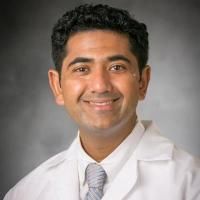Myocardial dysfunction in acute traumatic brain injury relieved by surgical decompression.
Date
2013
Journal Title
Journal ISSN
Volume Title
Repository Usage Stats
views
downloads
Citation Stats
Abstract
Traumatic brain injury (TBI) is a major public health issue and is a leading cause of death in North America. After a primary TBI, secondary brain insults can predispose patients to a worse outcome. One of the earliest secondary insults encountered during the perioperative period is hypotension, which has been directly linked to both mortality and poor disposition after TBI. Despite this, it has been shown that hypotension commonly occurs during surgery for TBI. We present a case of intraoperative hypotension during surgery for TBI, where the use of transthoracic echocardiography had significant diagnostic and therapeutic implications for the management of our patient. We then discuss the issue of cardiac dysfunction after brain injury and the implications that echocardiography may have in the management of this vulnerable patient population.
Type
Department
Description
Provenance
Subjects
Citation
Permalink
Published Version (Please cite this version)
Publication Info
Krishnamoorthy, Vijay, Deepak Sharma, Sumidtra Prathep and Monica S Vavilala (2013). Myocardial dysfunction in acute traumatic brain injury relieved by surgical decompression. Case Rep Anesthesiol, 2013. p. 482596. 10.1155/2013/482596 Retrieved from https://hdl.handle.net/10161/15743.
This is constructed from limited available data and may be imprecise. To cite this article, please review & use the official citation provided by the journal.
Collections
Scholars@Duke

Vijay Krishnamoorthy
Unless otherwise indicated, scholarly articles published by Duke faculty members are made available here with a CC-BY-NC (Creative Commons Attribution Non-Commercial) license, as enabled by the Duke Open Access Policy. If you wish to use the materials in ways not already permitted under CC-BY-NC, please consult the copyright owner. Other materials are made available here through the author’s grant of a non-exclusive license to make their work openly accessible.
